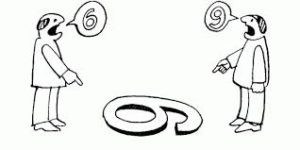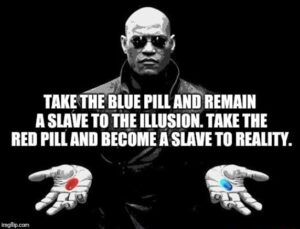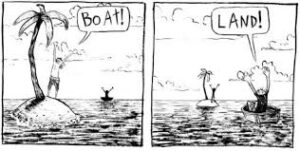Do we live in a fake world? I’m asking this question because fake news has hit a new high in 2019. Facebook has also expanded its third-party fact-checking program globally to check its spread. However, the moot question is why falsehood consistently dominates the truth on social media?
The fact is that social media is just an instrument that helps to amplify the rumors and lies. The real cause lies with the negativity bias of human nature i.e., we enjoy consuming negative content. That’s why Jonathan Swift once wrote: “Falsehood flies and the Truth comes limping after it”.
Anyway, how can one be authentic in a world full of fakes? Now that we have fake businesses with fake brands selling fake products to fake people who are busy sharing fake stories about their fake lives on the fake media, why not fake news? It’s all about fake, the fake, the fake! So, here once again I’m letting my imagination run wild to come up with fake ideas and fake solutions about the fake issues facing this fake world. So folks, let’s celebrate fake news! Here’s the Jan’2020 edition of The Faking Times:
1. SoftBank changes its name to HardBank, before the launch of the New Vision Fund.
2. The Adidas rolls out a new ad campaign with the tag line: “Believe in everything and sacrifice nothing”.
3. Australian PM blames Bollywood actor Aamir Khan for the bushfires.
4. Indian constitution amended to bring in the universal dress code as a precursor to a uniform civil code.
5. The Mumbai air turns completely dry after Coco-Cola installed the coke vending machines having atmospheric water generators (AWGs).
6. After the failed attempt to privatize Air India through strategic sales, GoI decides to nationalize the airline industry by merging all private airlines with Air India.
7. Anil Ambani becomes the first individual in India to be declared insolvent under the newly notified personal insolvency law.
8. India is soon going to be the first nation in the world to do away with data privacy. It has become necessary to boost the business sentiments in the slowing Indian economy.
9. The GoI includes onions in the PDS list.
10. UN general assembly unanimously passed a new resolution advocating that all central banks should toe the line of their respective governments.
11. The Maruti Suzuki India Ltd is building free parking every two kilometers after car parking disputes top the crime stats of India.
12. Tap water becomes costlier than colas: Pepsico signs an MOU with the GoI as part of its CSR initiative to supply Pepsi to Indian households at concessional rates.
13. To boost digital payments in India, GoI has amended the income tax act. Now an individual taxpayer will have to spend a minimum fifty percent of his taxable income through BHIM UPI or Rupay cards or else he would have to pay a penalty amount equivalent to the unspent amount.
14. AI replaces judges in Indian courtrooms: All the backlog of 30 million pending litigations stands resolved in just one week.

Again, coming back to the question of fake news, the dictionary meaning of fake when used as an adjective is “not real, but made to look or seem real”. But what exactly is real? Who decides what is real and what is fake? Does fake news originate only in digital media? What about yellow journalism? How authentic are the news or articles published in the print media? Aren’t those a reporter’s biased version of the reality. Isn’t there a blurred line between what is real and what is fake?
For instance, let’s consider the identity of the Ahmadiyya community. As per India, Ahmadis are Muslims while Pakistan considers them to be non-Muslims. What is the truth? In reality, both categories are a figment of the human imagination and are a part of humanly devised religious world-views.
Now, let’s take international borders between nations? Are they real or fake? It depends on who is the observer. Let me clarify it with an example: Suppose three journalists from an exoplanet comes to visit the planet earth and present the following reports to their respective publications:
Reporter 1: An animal species called homo-sapiens rules the planet earth and is continuously fighting territorial and religious wars; the fools are killing each other over artificially created boundaries and something called religion. Even after such a long evolution, their primitive mind still overshadows their higher mind.
Reporter 2: A species called homo-sapiens have wiped out almost the entire flora and fauna from this blue planet. Now, all the five elements of nature namely Earth (Prithvi), Water (Jal), Air (Vayu), Fire (Agni), and Ether (Akash) are acting in collusion with Sun (Suraj) to fight this deadly animal species.
Reporter 3: Came across two kinds of jungles: Natural jungles and artificially made concrete jungles called civilizations. In the first one, not much is left while in the other one only humans, cows, pigs, mosquitoes, wheat, plastic, and mountains of trash to be seen.

So, now which version is genuine. Or, are all of them fake? Reality can be only one and cannot have different versions. So, isn’t it all about perception? There are no easy answers. Actually, things that we read, see and hear are a mixture of truth and falsehood, and separating the two is often difficult.





